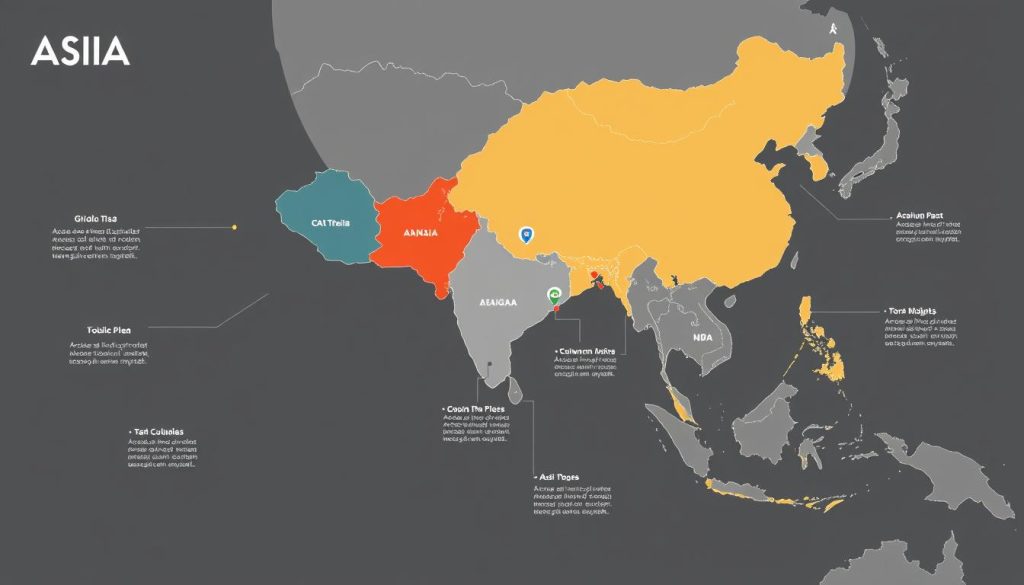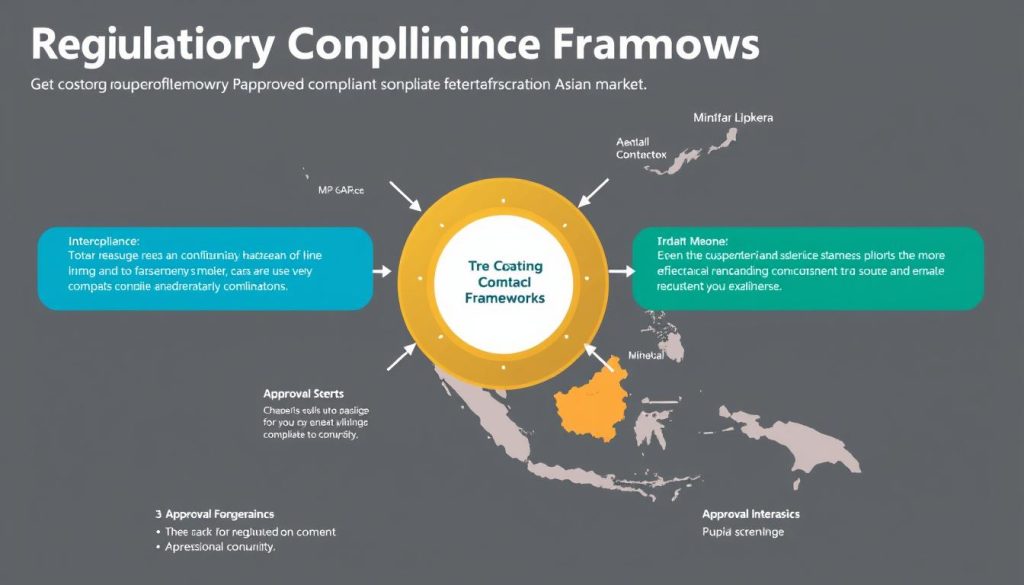Asia’s diverse economies present a goldmine of opportunities for entrepreneurs and investors in 2026. With rapidly evolving markets, technological advancements, and changing consumer behaviors across the region, now is the perfect time to explore innovative business ideas in Asia. This comprehensive guide examines lucrative ventures across different Asian countries, providing insights into market entry strategies, cultural considerations, and regulatory frameworks to help you launch a successful business in this dynamic region.
Key Takeaways
- Sustainable technology and green solutions are experiencing unprecedented growth across Asia
- Country-specific opportunities exist based on unique demographic and economic factors
- Strategic partnerships with local entities can significantly ease market entry
- Understanding cultural nuances and regulatory frameworks is crucial for success
- Digital transformation is creating new business models in traditional industries
- Rural markets present untapped potential for innovative solutions
Tech-Driven Innovation Opportunities
Tech innovation hubs are flourishing across major Asian cities
1. AI-Powered Healthcare Solutions
The healthcare sector across Asia is embracing artificial intelligence to improve diagnostics, treatment plans, and patient care. Countries like Singapore and Japan are leading this revolution with supportive regulatory frameworks. In India, startups like Niramai are using AI for early breast cancer detection, while China’s Ping An Good Doctor has revolutionized remote consultations.
Market Entry Strategy
- Partner with established healthcare providers
- Ensure compliance with country-specific medical regulations
- Develop solutions addressing local healthcare challenges
- Consider B2B models before direct-to-consumer approaches
2. Sustainable AgriTech
With food security concerns growing across Asia, agricultural technology solutions are gaining significant traction. From vertical farming in Singapore to precision agriculture in India, investors are backing innovations that increase yield while reducing environmental impact. Companies like CropIn in India and Jing Dong’s JD Farm in China demonstrate how technology can transform traditional farming.
The market for AgriTech in Asia is projected to reach $15.3 billion by 2025, with particular growth in Southeast Asian countries facing climate change challenges. Local governments are increasingly offering incentives for sustainable farming technologies.
E-commerce Niches with Growth Potential

3. Specialized E-commerce Platforms
While giants like Alibaba and Shopee dominate the general e-commerce landscape, specialized platforms catering to niche markets are finding remarkable success. In Indonesia, Evermos has created a social commerce platform for Islamic products, while Thailand’s Pomelo focuses exclusively on fashion. The key is identifying underserved market segments with specific needs.
4. Cross-Border E-commerce Solutions
As Asian consumers increasingly seek international products, businesses facilitating cross-border e-commerce are thriving. This includes logistics solutions, payment processing, and localization services. Singapore-based Anchanto provides an excellent example with its platform that helps brands manage cross-border operations across multiple Asian marketplaces.
E-commerce Success Factors in Asia
- Mobile-first approach (over 90% of Southeast Asian internet users access primarily via smartphones)
- Integration with local payment methods (e.g., GCash in Philippines, Paytm in India)
- Localized customer service in native languages
- Partnerships with trusted local logistics providers
Sustainable Business Ideas in Asia

5. Renewable Energy Solutions
Asia’s rapid economic growth has created unprecedented energy demands, making renewable energy one of the most promising business ideas in Asia. Countries like Vietnam, India, and China are investing heavily in solar and wind infrastructure. Beyond large-scale projects, there’s growing demand for distributed energy solutions serving rural communities.
Vietnam’s Trung Nam Group exemplifies success in this sector, developing some of Southeast Asia’s largest solar farms while creating thousands of jobs. In India, companies like ReNew Power have attracted significant international investment for renewable projects.
6. Sustainable Packaging Alternatives
With plastic pollution reaching crisis levels across Asia, businesses offering sustainable packaging solutions are seeing rapid growth. Thailand’s Gracz creates biodegradable packaging from cassava, while India’s Ecoware produces plant-based disposable tableware. Government regulations restricting single-use plastics in countries like China and Indonesia are accelerating market demand.
7. Eco-Tourism Ventures
Post-pandemic tourism in Asia is increasingly focused on sustainability and authentic experiences. Vietnam’s Topas Ecolodge and Indonesia’s Misool Resort demonstrate how eco-tourism can combine luxury with environmental conservation. The key success factor is creating genuine sustainability practices while providing exceptional guest experiences.
Country-Specific Business Opportunities

Japan
8. Elderly Care Technology
With over 28% of Japan’s population aged 65 or older, businesses addressing elderly care needs represent one of the most promising markets in Asia. From robotics assistance to specialized healthcare monitoring, Japan offers substantial opportunities for age-tech innovations.
Companies like Cyberdyne with its HAL exoskeleton technology are pioneering solutions that help elderly individuals maintain independence longer.
India
9. Rural Fintech Solutions
India’s vast rural population remains underserved by traditional banking, creating opportunities for fintech solutions adapted to rural needs. Companies like Spice Money are creating agent networks that bring financial services to remote villages, while PayNearby enables essential banking through local retail shops.
Vietnam
10. Manufacturing Technology
As Vietnam continues to attract manufacturing operations relocating from China, businesses providing technology solutions for factories are seeing rapid growth. This includes automation, quality control systems, and supply chain management platforms tailored to Vietnam’s industrial zones.
Indonesia
11. Islamic Finance Platforms
With the world’s largest Muslim population, Indonesia presents significant opportunities for Sharia-compliant financial services. Digital platforms like ALAMI are modernizing Islamic finance through technology, making these services more accessible to Indonesia’s growing middle class.
Singapore
12. Cybersecurity Services
As Singapore positions itself as Asia’s digital hub, demand for advanced cybersecurity solutions continues to grow. Local regulations like the Cybersecurity Act create a structured market for security services, particularly for financial institutions and critical infrastructure.
Thailand
13. Medical Tourism Platforms
Thailand’s established medical tourism industry is evolving with digital platforms that streamline the patient journey. Companies connecting international patients with Thai healthcare providers, handling everything from hospital selection to accommodation, are finding success in this specialized niche.
Digital Transformation Opportunities

14. Traditional Industry Digitization
Across Asia, traditional industries from agriculture to manufacturing are undergoing digital transformation. Businesses that can bridge the gap between established practices and new technologies find substantial opportunities. In China, Pinduoduo revolutionized agricultural distribution by connecting farmers directly with urban consumers through its platform.
15. Digital Education Platforms
The education technology sector continues to expand across Asia, with different countries presenting unique opportunities. In South Korea, English language learning platforms remain popular, while India sees growth in exam preparation and vocational training. BYJU’S success in India demonstrates the massive potential of this sector when aligned with local educational priorities.
Digital Transformation Success Factors
- Understanding of traditional industry pain points
- Phased implementation approach rather than complete overhaul
- Training and support for technology adoption
- Solutions adapted to local infrastructure limitations
Emerging Trends Creating New Opportunities

16. Augmented Reality Commerce
AR technology is transforming retail experiences across Asia, with particularly strong adoption in China and South Korea. From virtual try-ons for cosmetics to furniture placement visualization, businesses integrating AR into shopping experiences are seeing higher conversion rates and reduced returns.
17. Mental Health Platforms
Once taboo in many Asian cultures, mental health services are gaining acceptance, particularly through discreet digital platforms. Singapore’s Safe Space and India’s Wysa demonstrate how technology can provide accessible mental health support while respecting cultural sensitivities around these issues.
18. Alternative Protein Products
Asian markets are increasingly embracing plant-based and alternative protein products, creating opportunities for innovative food companies. Singapore-based Next Gen Foods with its TiNDLE plant-based chicken and Hong Kong’s Green Monday with OmniPork show how products adapted to Asian culinary preferences can gain significant market share.
Market Entry Strategies for Asian Business Success

19. Local Partnership Models
Successful market entry often depends on finding the right local partners. This can range from distribution agreements to joint ventures, depending on the industry and regulatory environment. Indonesia’s complex business landscape makes local partnerships particularly valuable, while Vietnam’s manufacturing sector often benefits from joint ventures with technology transfer components.
20. Cross-Cultural Business Consulting
As more international companies enter Asian markets, demand for cross-cultural business consulting continues to grow. Businesses that can bridge Western and Asian business practices, helping with everything from negotiation strategies to team management, provide essential services for market entrants.
“The most successful businesses in Asia don’t simply transplant Western models—they adapt their approach to local market conditions while maintaining their core value proposition.”
Essential Market Entry Considerations
- Regulatory compliance requirements vary significantly between countries
- Intellectual property protection strategies should be established before entry
- Cultural adaptation of products, services, and marketing materials
- Local talent acquisition and retention strategies
- Tax implications and financial structuring
Navigating Regulatory Environments Across Asia

Regulatory environments vary dramatically across Asian countries, creating both challenges and opportunities for entrepreneurs. Singapore offers one of the most business-friendly regulatory frameworks, while Indonesia and Vietnam present more complex compliance requirements. Understanding these differences is crucial for successful market entry.
| Country | Business Registration Time | Foreign Ownership Restrictions | Key Regulatory Considerations |
| Singapore | 1-3 days | Minimal | Transparent process, low corporate tax, strong IP protection |
| Indonesia | 13-21 days | Significant in many sectors | Negative investment list, local partner requirements |
| Vietnam | 16-24 days | Varies by industry | Investment certificates, sector-specific licenses |
| India | 18-30 days | Sector-dependent | State and federal regulations, GST compliance |
| Japan | 2-4 weeks | Limited | Complex tax system, high compliance standards |
Success Stories: Learning from Asian Market Leaders

Gojek: Indonesia’s Super App
Starting as a motorcycle ride-hailing service, Gojek evolved into Indonesia’s first unicorn by expanding into food delivery, digital payments, and dozens of other services. Their success demonstrates the power of solving local logistical challenges while continuously expanding service offerings to increase customer retention.
Byju’s: India’s EdTech Giant
By addressing India’s exam-focused education system with engaging digital content, Byju’s grew from a small startup to a $22 billion company. Their approach of combining offline and online learning experiences proved particularly effective in a market where parents highly value educational investments.
Alibaba’s Taobao Villages
Alibaba’s rural strategy created “Taobao Villages” – communities where at least 10% of households sell products online. This initiative transformed rural economies while expanding Alibaba’s market reach, demonstrating how e-commerce can drive economic development in previously underserved areas.
“The most successful Asian startups identify unique local challenges and solve them with scalable technology solutions that can eventually expand regionally or globally.”
Launching Your Business in Asia: Next Steps

Asia’s diverse markets offer unprecedented opportunities for entrepreneurs willing to understand local conditions and adapt their business models accordingly. Whether you’re interested in technology, sustainability, or traditional industries undergoing digital transformation, there’s no shortage of innovative business ideas in Asia with strong growth potential.
Success requires thorough market research, cultural sensitivity, and often local partnerships to navigate regulatory environments. By focusing on solving genuine market needs with innovative approaches, entrepreneurs can build businesses that not only generate profits but also contribute to Asia’s continued economic development.
Ready to Explore Business Opportunities in Asia?
Our team of market entry specialists can help you evaluate opportunities, navigate regulatory requirements, and connect with potential partners across Asian markets.
Frequently Asked Questions About Business in Asia
Which Asian countries are most welcoming to foreign entrepreneurs?
Singapore consistently ranks as the most business-friendly country in Asia, with streamlined registration processes, strong IP protection, and minimal foreign ownership restrictions. Malaysia, Thailand, and Vietnam are also increasingly open to foreign entrepreneurs, though specific regulations vary by industry sector.
What are the typical capital requirements for starting a business in Asia?
Capital requirements vary significantly by country and business type. Singapore has no minimum capital requirement for most businesses, while Indonesia may require 0,000+ for certain foreign-owned enterprises. Vietnam typically requires ,000-,000 depending on the industry, while Japan has no statutory minimum but practically requires sufficient operating capital.
How important is having a local partner when entering Asian markets?
The value of local partners varies by country. In Indonesia and Vietnam, local partners are often essential for navigating regulatory requirements and building business relationships. In Singapore and Hong Kong, foreign entrepreneurs can generally operate independently. In all markets, local partners can provide valuable cultural insights and business connections, even when not legally required.
What are the biggest challenges for Western entrepreneurs in Asian markets?
Common challenges include understanding local business cultures, navigating regulatory environments, building trusted relationships, and adapting products or services to local preferences. Language barriers can also present difficulties, particularly in Japan, Korea, and China. Successful entrepreneurs invest time in understanding these differences rather than applying Western business approaches directly.
















